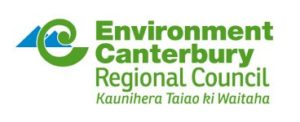5.7 Tāwhirimātea
Wāhi Tuarima | Part 5
Ngā Take ā-rohe Me Ngā Kaupapa | Regional Issues and Policy
5.7 Tāwhirimātea [TAW]
Tāwhirimātea is the son of Rangi and Papatūānuku, and the atua of storms and wind. Following the separation of Ranginui and Papatūānuku (the sky and the earth), their child Tāwhirimātea fled with his father to the sky. From there he presided over the elements, including the rain, wind, mist, dew and snow.
[Please note: climate change mitigation and adaptation strategies are not included in the IMP 2013. Please see Ngai Tahu Climate Change Te Kounga Paparangi.
Ngā Paetae | Objectives
(1) The realm of Tāwhirimātea is recognised for the potential to provide an alternative source of energy for the takiwā.
Ngā Take | Issues of Significance
- TAW1: Wind farms
TAW1: Wind Farms
Issue TAW1: The establishment of wind farms and the potential effects on Ngāi Tahu values and associations with the landscape.
Ngā Kaupapa / Policy
TAW1.1 To assess and evaluate the cultural implications of any wind farm proposal in the takiwā with particular regard to:
(a) Location:
(i) Proximity and visibility in relation to culturally significant sites, places, features, and landforms; and
(ii) Relationship of site to wider Ngāi Tahu cultural landscape.
(b) Nature, extent and significance of cultural landscape values in the area, including:
(i) Historic and contemporary mahinga kai associations;
(ii) Tribally significant landforms;
(iii) Indigenous flora and fauna, including plants and insects;
(iv) Wāhi tapu and wāhi taonga, including archaeological sites;
(v) Waterways, wetlands, waipuna; and
(vi) Natural character (i.e. degree of existing modification of site).
(c) Size of the wind farm (i.e. would a smaller wind farm have less impact?);
(d) Ability of the wind farm to reduce pressure on water resources through providing alternative source of energy;
(e) Opportunities to enhance cultural landscape values (e.g. enhancement of indigenous biodiversity); and
(f) Robust assessment of alternatives.
TAW1.2 To promote co-operative and constructive relationships between the energy sector and Ngāi Tahu, over and above RMA 1991 consultation, to facilitate consideration of effects of wind farms on tāngata whenua values and interests.
TAW1.3 To require the protection of key cultural landscape values, as identified by tāngata whenua, from activities associated with the development and operation of wind farms.
TAW1.4 To require, where a proposal has the potential for significant effects on tāngata whenua values, one or more of the following, at the discretion of the Papatipu Rūnanga:
(a) Cultural Impact Assessment (CIA), as part of the Assessment of Environmental Effects;
(b) Site visit;
(c) Archaeological assessment, by a person nominated by the Papatipu Rūnanga;
(d) Provision of accurate graphic representations of proposals to enable tāngata whenua to clearly visualise; projects on the landscape; and
(e) Cultural monitoring during earthworks.
TAW1.5 To require that consultation with tāngata whenua and assessments of actual and potential effects on cultural values occur as part of feasibility assessments, alongside other technical impact assessment reports (e.g. landscape, ecology).
He Kupu Whakamāhukihuki / Explanation
Tāngata whenua support the use of wind for energy generation. However, wind farms may be proposed for areas with significant historical, spiritual, traditional and cultural associations. Wind farms require large areas of land and preferred locations are often prominent ridge lines or hill areas. Physical access to an area and customary use opportunities may be lost, or culturally important views may be compromised. Construction of access roads may require clearance of native vegetation, earthworks may damage, destroy or modify sites of cultural significance, sedimentation may enter waterways, or pest plants may invade an area following ground disturbance.
The protection of cultural landscape values from inappropriate use and development is a key policy area for tāngata whenua (see Section 5.8). While a particular ridge line may be the best site option for wind power generation potential, the potential impact on cultural and natural landscape values may outweigh the benefits. Conversely, a proposed wind farm may provide opportunities to enhance cultural landscape values, through a change in land use that reduces environmental effects, or on and off-site mitigation such as the restoration of indigenous biodiversity or contributions to species recovery programmes.
Information resource:
» Hullen, J. & Ngāi Tūāhuriri Rūnanga. 2007. Proposed Mount Cass Wind Farm: Cultural Impact Assessment Report.








